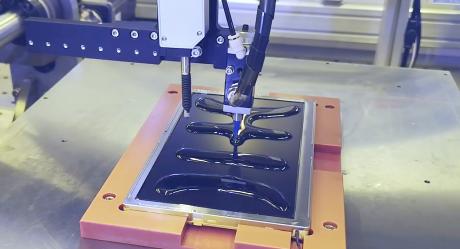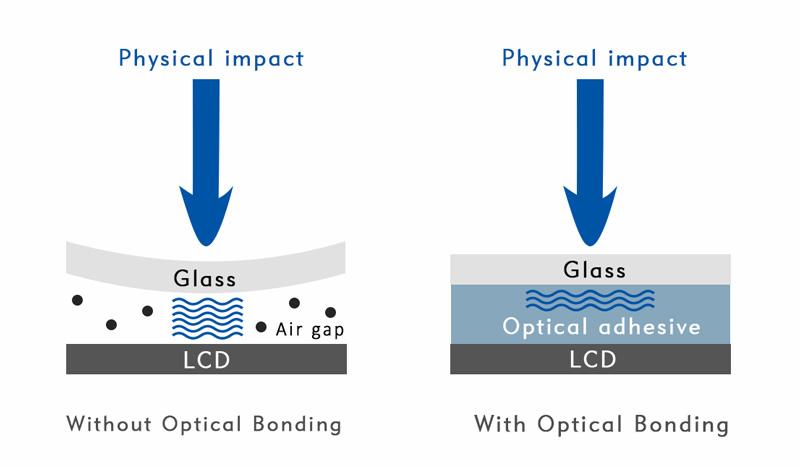Optical bonding is well-known to improve display viewability and help reduce backlight power, but now its beneficial effects on impact resistance sought for consumer, industrial, and automotive applications offers even better value.
At Anders we have many years’ experience of applying optical bonding to improve viewing for outdoor environments and thereby reducing power consumption and having an increased resistance to impact damage. It’s also now more affordable than ever.
What is optical bonding and why is it used?
Optical bonding, using optically clear adhesive, has traditionally been applied to improve display readability by preventing reflection of ambient light between the surface of the display and the coverlens.
Without it, the ambient light reflected into the user’s eye can overpower illumination from the display backlight. Unless the backlight power is increased, viewing in very bright conditions can be extremely difficult. Optical bonding enhances the viewing characteristics and allows the backlight power to be greatly reduced. It also saves the cost of applying anti-reflective treatments to the front of the coverlens.

How does optical bonding increase the impact resistance of a display?
By increasing the structural integrity of the combined coverlens+display assembly, optical bonding significantly increases the display’s impact resistance.
Optical bonding helps avoid breakage by preventing both the coverlens and the display from deflecting excessively. The reason is quite straightforward: like many things in this world, they are stronger together. However, optical bonding alone will not necessarily guarantee passing IK08 or ECE R21 tests. You must also ensure the mounting is properly designed to hold the unit securely and help dissipate the impact energy.

Why are IK impact resistance ratings important to displays, and how are they calculated?
The ability to withstand accidental impacts or vandalism is becoming become more important to more users as graphical HMIs pervade an ever-growing variety of everyday equipment used in stores, transport hubs, factories, offices, homes, and in the cars we drive.
The internationally recognised two-digit IK scale classifies resistance to kinetic impact of enclosures for electrical equipment. It extends from IK01 (1.4 joules of impact energy) to IK10 (20J). The European standard EN 62262 describes the tests that must be applied to establish an IK rating. The 5J IK08 rating, which is widely applied to consumer and industrial displays, requires withstanding five evenly distributed blows with a 1.7kg steel weight, striking radius 25mm, freefall height 0.3m. A pendulum test must also be performed. EN 62262 specifies required atmospheric conditions, too.


